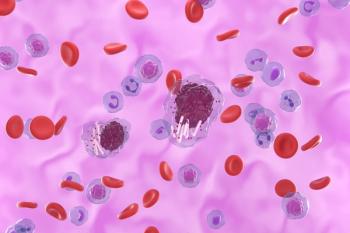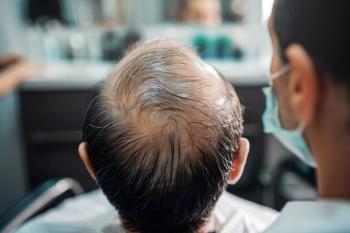
Topical Ruxolitinib Emerges as Promising Therapy for Diverse Inflammatory Skin Conditions
Key Takeaways
- Topical ruxolitinib offers a promising treatment for dermatologic conditions with fewer adverse events than oral JAK inhibitors.
- FDA approvals for ruxolitinib cream in atopic dermatitis and vitiligo are based on positive clinical trial outcomes.
Topical ruxolitinib cream shows promise as a treatment for inflammatory skin conditions, but lacks consistent data, indicating a need for further research into its use across various dermatologic conditions.
Topical ruxolitinib may be a promising therapeutic option for lichenoid and granulomatous dermatoses, although further research is needed to consistently demonstrate its efficacy in alopecia areata and other inflammatory
Clinicians treating patients who have common dermatologic conditions like psoriasis, atopic dermatitis, alopecia areata, and vitiligo can incorporate Janus kinase (JAK) inhibitors as a potential therapeutic approach. However, oral JAK inhibitors have been linked to major cardiovascular and thromboembolic events, systemic infections, and malignancies. Topical JAK inhibitors present a lower risk of adverse events and drug interactions compared with systemic formulations.
Ruxolitinib, a selective inhibitor of JAK1 and JAK2, prevents a decrease in downstream cytokines like interleukin (IL)-4, IL-13, IL-31, and thymic stromal lymphopoietin. The FDA approved the first topical ruxolitinib cream in September 2021 for treating atopic dermatitis in patients 12 years and older, basing its decision on results from the TRuE-AD1 (
Researchers conducted a systemic review of published literature to provide the most current evidence-based data on the off-label use of topical ruxolitinib in dermatology.1 The review included 28 published papers.
There were 6 studies that investigated the efficacy of topical ruxolitinib in managing alopecia areata. One study demonstrated the efficacy of 1.5% ruxolitinib cream, with a Severity of Alopecia Tool score that showed a 50% or higher improvement from baseline. Another study found overall hair regrowth to be better in the clobetasol-treated areas. In one case report, a patient experienced about 75% of upper eyelash regrowth, but eyebrows did not regrow, and another patient saw full eyebrow regrowth and 10% scalp regrowth. A separate case report showed full hair regrowth after retreating with only topical ruxolitinib for an extended period.
A patient with frontal fibrosing alopecia who used ruxolitinib 1.5% cream cleared papules, stabilized their frontal hairline, and resolved symptoms like itching and burning. Ruxolitinib plays a potential therapeutic role in frontal fibrosing alopecia by activating IFN-γ signaling and the expression of JAK proteins in inflammatory cells.
Researchers also outlined 3 studies on applying topical ruxolitinib in patients with lichen planus. One case showed a significant decrease in total lesion count and improved modified Composite Assessment of Index Lesion Severity scores. Additional studies demonstrated a complete resolution after 9 months of treatment and showed identifiable improvements after adjunctive therapy.
Topical ruxolitinib also improved the erythematous patch, pruritus, and dysuria in pediatric lichen sclerosus et atrophicus. Ruxolitinib proved effective for a single patient with morphea in a case series, and it improved pruritus, hyperpigmentation, and erythema. Following 3 months of ruxolitinib 1.5% cream treatment, a patient with granuloma annulare obtained complete clearance. In another case, a patient with lupus miliaris disseminatus faciei that did not respond to systemic or topical first-line treatments achieved an almost complete clearance of facial papules with ruxolitinib 1.5% cream.
Researchers included 2 studies of patients with necrobiosis lipoidica and topical ruxolitinib’s effects on them. They found significant improvements by lesion score and Skindex-16 score, while they registered no significant effects on total body lesion count or pruritus numerical rating scale. Patients who switched to ruxolitinib 1.5% cream also showed dramatic improvements. Patients diagnosed with sarcoidosis, granuloma faciale, and granulomatous scleromyxedema all experienced improvements in disease burden with ruxolitinib cream.
In a study of 27 subjects with plaque psoriasis, ruxolitinib cream decreased the total composite lesion score of erythema, thickness, and scaling. A case report featured a woman with notalgia paresthetica, and ruxolitinib cream reduced her overall itch. Ruxolitinib cream also improved pruritus and nodules in patients with tattoo pruritus. Additionally, patients with discoid lupus erythematosus reported hair regrowth and decreased skin lesions with ruxolitinib treatment.
The researchers also included 2 case reports that showed topical ruxolitinib’s efficacy against seborrheic dermatitis after ruxolitinib 1.5% led to a resolution in the skin manifestations. Overall, ruxolitinib cream gave patients with seborrheic dermatitis almost complete clearance. Case reports, which included patients with granulomatous perioral dermatitis, showed ruxolitinib cream improved symptoms after 1 week and helped to achiev complete resolution after 34 weeks.
After a patient switched to topical ruxolitinib cream, they experienced nearly resolved skin manifestations from facial blaschkitis. Topical ruxolitinib resolved pruritus and cleared the skin rash in an immune checkpoint inhibitor–induced eczematous reaction.
A single case report featured a patient with a history of axillae and inguinal folds in the setting of Hailey-Hailey disease, and ruxolitinib cream improved their residual disease. Another report described a patient who switched to daily ruxolitinib 1.5% cream and experienced marked improvement, which suggested that topical steroid withdrawal could be prevented.
The study’s limitations stem from the various study designs, which impacted the evidence level. Researchers used inconsistent topical ruxolitinib formulations across studies, especially before the 1.5% cream became available. Although most studies prescribed 1.5% cream, others described different ointments and concentrations. Dosing varied significantly and prescriptions were often twice daily, but some studies applied it once daily. Therapy duration also varied, from 4 weeks to nearly 2 years, leading to inconsistent efficacy outcomes and complicating definitive conclusions about optimal dosing. Finally, excluding conference abstracts, preprints, and non-English papers may have introduced selection bias.
“Future clinical trials should evaluate ruxolitinib cream as an alternative treatment for skin conditions that are unresponsive to first-line therapies,” the study authors concluded.
References
1. Spadafora M, Morsia S, Giuseppe V, Kaleci S, Pellacani G, Longo C. Off‐label use of topical ruxolitinib in dermatology: a systematic literature review and current perspectives. Exp Dermatol. 2025;34(4). doi:10.1111/exd.70095
2. AJMC® staff. Ruxolitinib cream approved for short-term treatment of atopic dermatitis. AJMC. September 22, 2021. Accessed June 17, 2025.
3. Gavidia M. FDA approves ruxolitinib cream as first repigmentation therapy for vitiligo. AJMC. July 19, 2022. Accessed June 17, 2025.
Newsletter
Stay ahead of policy, cost, and value—subscribe to AJMC for expert insights at the intersection of clinical care and health economics.









































